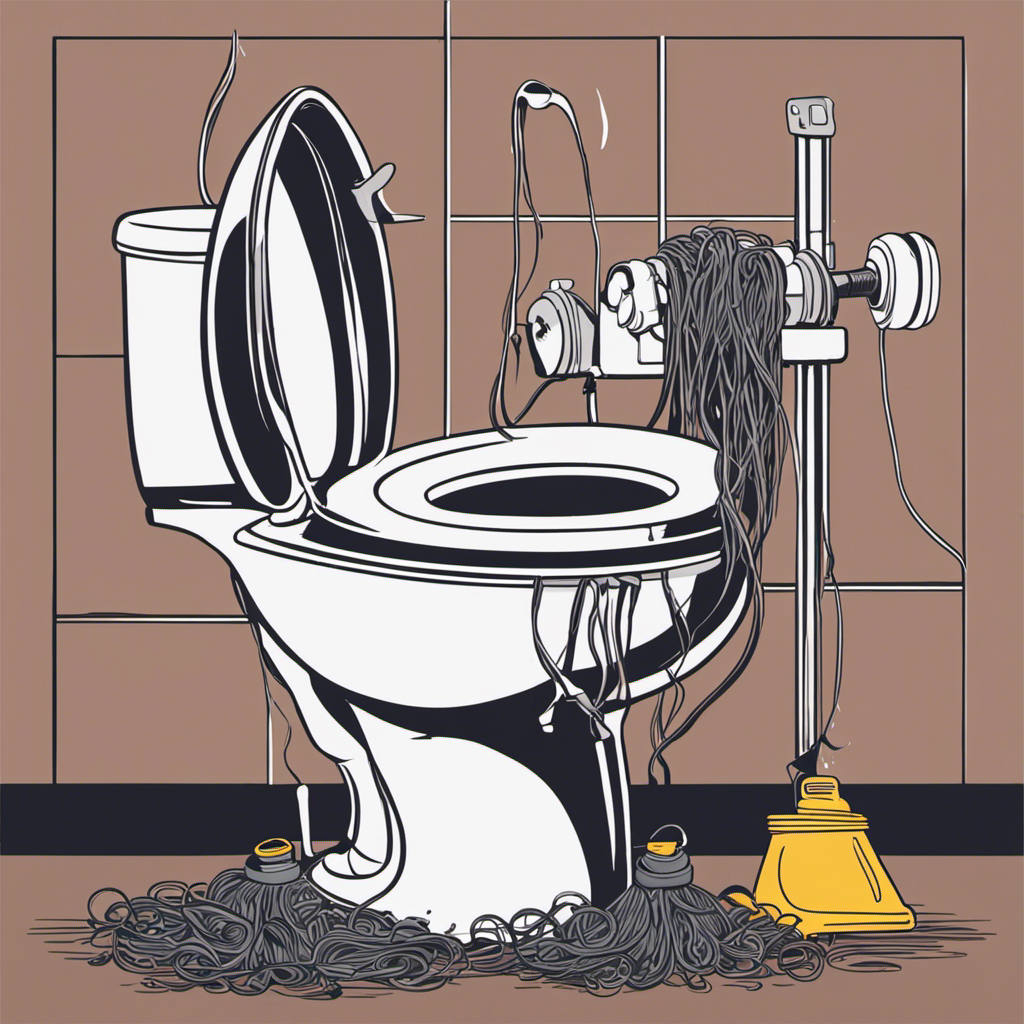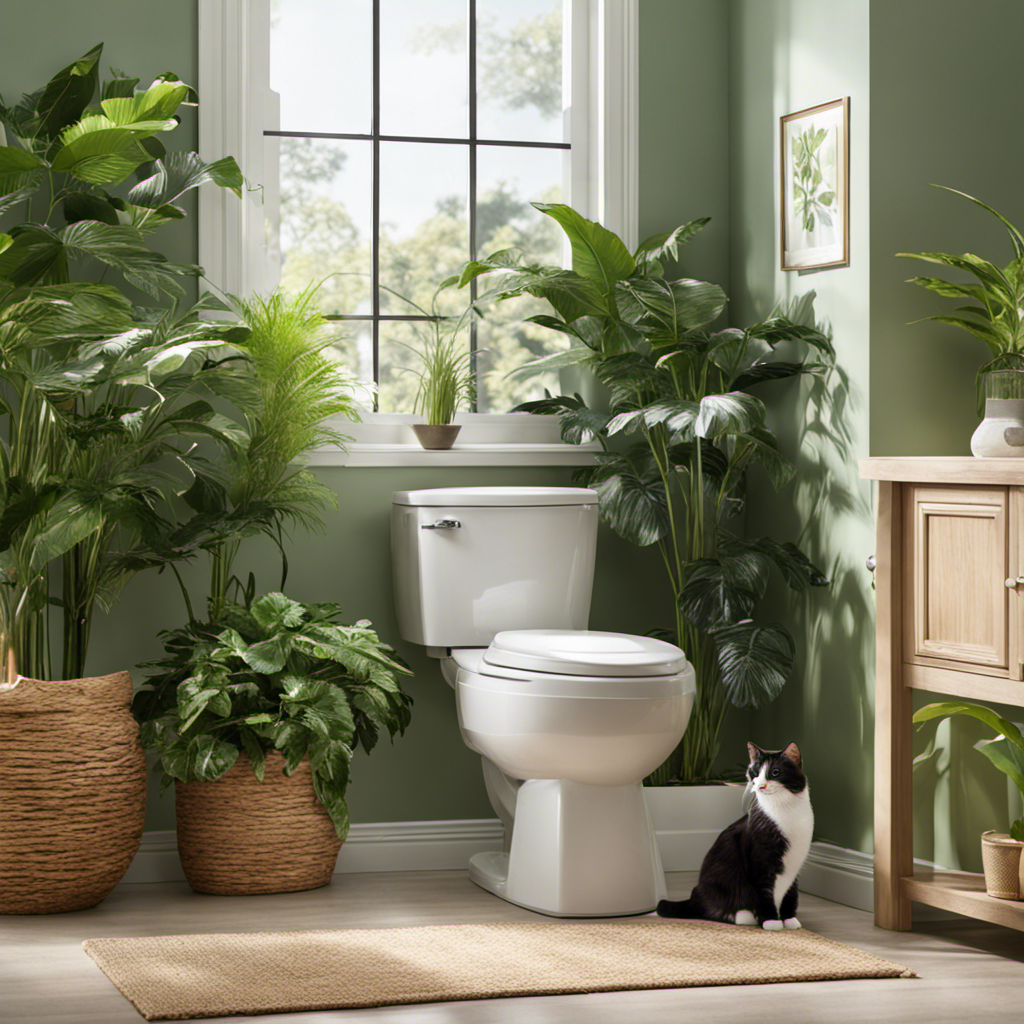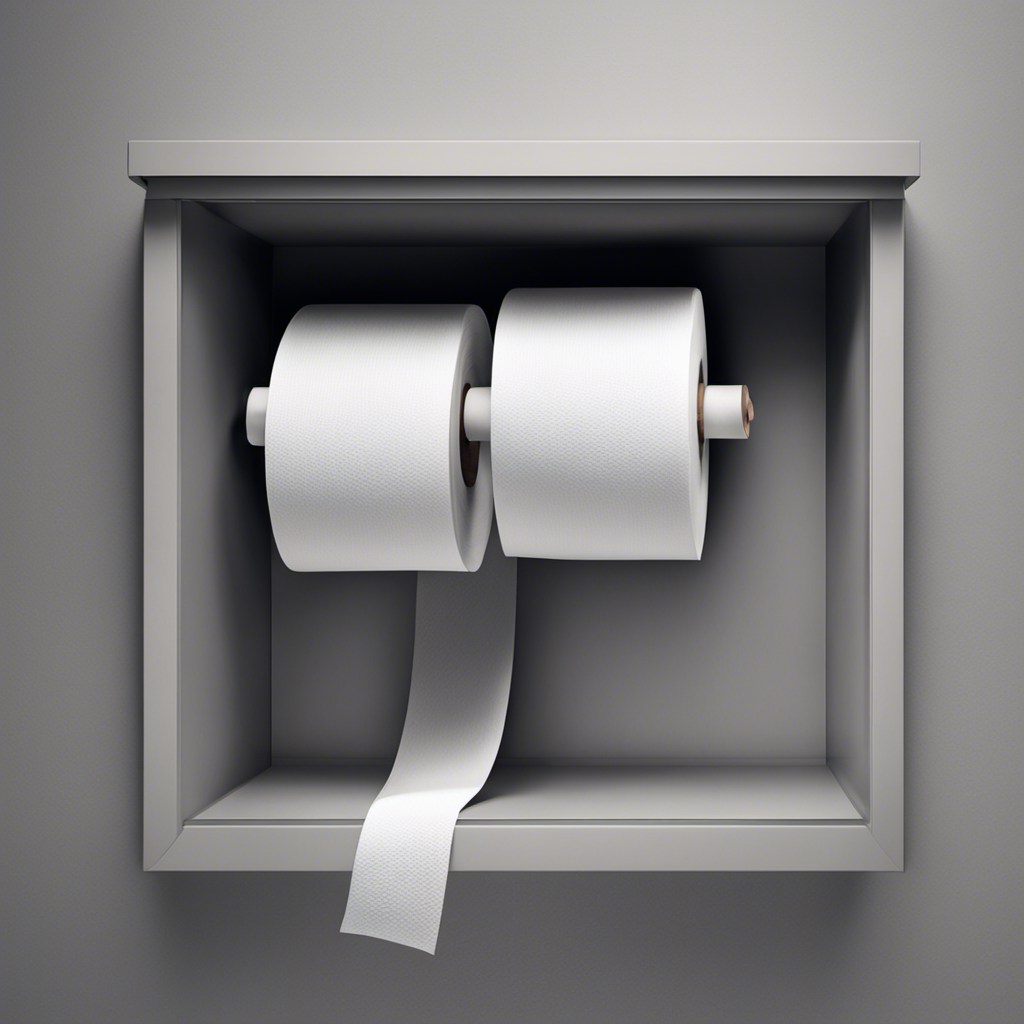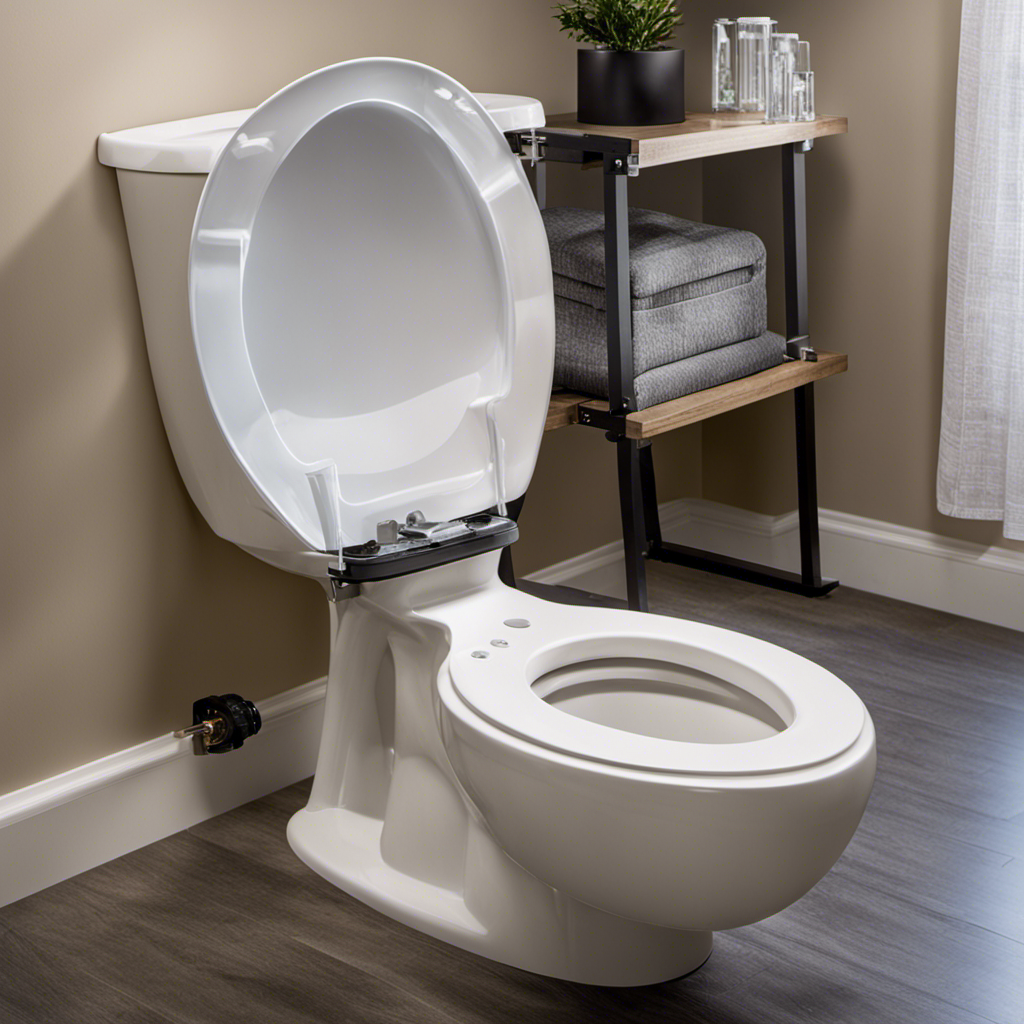Like a tangled mess of knotted hair, the problems with flushing hair down the toilet can be a real drain on your plumbing system. As someone who has experienced firsthand the frustration of clogged pipes and backed-up drains, I understand the importance of proper disposal methods.
In this article, I will delve into the reasons why flushing hair down the toilet is a bad idea, provide tips for unclogging those stubborn hair clogs, and discuss other items that should never be flushed.
So, let’s untangle this hairy situation and find the right way to dispose of hair while keeping our plumbing happy.
Key Takeaways
- Flushing hair down the toilet can lead to difficult removal and blockages in pipes.
- Hair does not break down easily and can form clumps, causing drain clogs.
- Proper disposal methods include throwing hair strands in the trash or considering composting.
- Unclogging methods for hair clogs include using a plunger, toilet auger, dish soap, or vinegar and baking soda.
Hair Hooks to Rough Surfaces
Hair hooks to rough surfaces like pipes, making it difficult for me to remove when I flush it down the toilet. This can lead to hair buildup and cause plumbing damage. Hair strands do not break down easily and can form clumps, eventually blocking the drain.
Older drains with bumps and folds are more prone to this issue. To prevent hair buildup and minimize plumbing damage, it is important to dispose of hair properly. Instead of flushing it, throw hair strands in the trash. You can also place a trash can next to the toilet as a reminder.
Composting hair strands for use as fertilizer is another option. Burning hair is an alternative, but it has a strong smell and can be dangerous. By disposing of hair in the garbage, you can avoid clogs and costly repairs.
Hair’s Slow Breakdown Process
I’ve learned that unlike human waste and toilet paper, hair doesn’t break down quickly, which can lead to clogs and plumbing issues. When hair is flushed down the toilet, it can accumulate in the pipes and form clumps that block the drain.
This slow breakdown process is why it’s important to properly dispose of hair strands. Instead of flushing them, throw them in the trash or consider composting them for use as fertilizer.
Burning hair is an alternative, but it comes with hazards such as strong odors and potential dangers. It’s best to dispose of hair in the garbage for a more convenient and safe option.
Clumps and Drain Blockages
Using a plunger or a toilet auger can effectively remove clumps of hair and unclog the drain, preventing drain blockages. These DIY drain cleaning techniques are simple and can save you from costly repairs.
When hair gets flushed down the toilet, it can form clumps and block the drain, especially in older drains with bumps and folds. To prevent this, it’s important to properly dispose of hair strands by throwing them in the trash instead of flushing them.
However, if you do encounter a hair clog in your toilet, using a plunger or a toilet auger can help break through the clog and remove excess hair. Remember to use dish soap, vinegar, or baking soda to lubricate or dissolve the clog for easier removal.
Vulnerability of Older Drains
When older drains have bumps and folds, they become more susceptible to hair buildup and blockages. The vulnerability of older drains is a result of their compromised structure, which allows hair to get trapped more easily. This can lead to a variety of issues, including clogs and potential damage to plumbing systems.
To prevent these problems, regular maintenance is required. It is important to regularly clean and inspect older drains to ensure they are functioning properly. This may involve using drain cleaners or calling a professional plumber for assistance.
Neglecting the maintenance of older drains can result in costly repairs and disruptions to your plumbing system. By taking the necessary steps to maintain older drains, you can avoid the potential damage and inconvenience caused by hair buildup and blockages.
Consistent Flushing Leads to Clogs
Consistently flushing hair down the toilet can lead to frequent clogs and potential damage to the plumbing system. It’s important to take steps to prevent these issues and minimize the environmental impact.
Here are some tips to help you avoid toilet clogs caused by hair flushing:
- Throw hair strands in the trash instead of flushing them.
- Place a trash can next to the toilet as a reminder.
- Consider composting hair strands for use as fertilizer.
- Dispose of hair in the garbage for a more convenient and safe option.
By following these guidelines, you can prevent clogs and protect your plumbing system.
Additionally, flushing hair down the toilet has negative environmental consequences. It can cause blockages in plumbing systems, damage sewage treatment plants, and contribute to environmental pollution. To avoid these problems, it’s important to dispose of hair properly and reduce the strain on our wastewater infrastructure.
Proper Disposal of Hair Strands
I can throw hair strands in the trash instead of flushing them to ensure proper disposal. Not only does this prevent potential plumbing problems, but it also helps protect the environment. Hair doesn’t break down easily and can cause blockages in pipes, leading to costly repairs. To emphasize the importance of proper disposal, let’s take a look at the benefits of composting hair strands and the hazards of burning them:
| Composting Benefits | Burning Hazards |
|---|---|
| – Hair can be composted and used as fertilizer for plants. | – Burning hair releases strong odors that can be unpleasant. |
| – Composting hair reduces waste and promotes sustainable gardening. | – The burning process can be dangerous and may cause fires. |
| – Composted hair adds nutrients to the soil and improves its quality. | – Burning hair emits harmful pollutants into the air. |
Unclogging a Toilet With Hair Clogs
Now that we know how to properly dispose of hair strands, let’s discuss what to do if you encounter a clogged toilet due to hair buildup. Dealing with a hair clog can be a frustrating experience, but there are several DIY unclogging methods you can try before calling a professional.
Here are some effective techniques for unclogging a toilet with hair clogs:
-
Plunger: Use a plunger to create pressure and push out the clog. Make sure to use a toilet plunger specifically designed for this purpose.
-
Toilet Auger: A toilet auger can break through the clogs and remove excess hair. Insert the auger into the toilet drain and rotate it to dislodge the clog.
-
Dish Soap: Apply dish soap to the clog to lubricate it and help it slip through the pipes. Let it sit for a few minutes before flushing the toilet.
-
Vinegar and Baking Soda: Create a mixture of vinegar and baking soda and pour it down the toilet. The chemical reaction can dissolve the clog and tear it into smaller pieces.
By following these DIY unclogging methods, you can save time and money on professional plumbing services. However, if these techniques don’t work or if the clog persists, it’s best to seek professional help to avoid further damage to your plumbing system.
Other Items You Shouldn’t Flush
Throwing food waste, hygiene products, and paper towels into the toilet can lead to blockages and costly repairs. It is important to properly dispose of these non-flushable items to avoid these issues and minimize the environmental impact.
When it comes to food waste, it should be thrown in the trash or composted if possible. Hygiene products, such as tampons and baby wipes, should also be disposed of in the trash. Paper towels should never be flushed down the toilet and should be thrown away instead.
Flushing non-biodegradable items can cause blockages in plumbing systems, damage sewage treatment plants, and contribute to environmental pollution. By following proper disposal methods for these items, we can prevent clogs and keep our plumbing systems running smoothly while also protecting the environment.
Frequently Asked Questions
Can Flushing Hair Down the Toilet Cause Damage to the Pipes in My Home?
Flushing hair down the toilet can cause damage to the pipes in my home. It can lead to hair clogs, which can block the drain and require costly plumbing maintenance. Hair clog prevention is important for proper plumbing maintenance.
What Are the Potential Consequences of Consistently Flushing Hair Down the Toilet?
Consistently flushing hair down the toilet can lead to potential health risks and a negative impact on sewage systems. It can cause blockages, clogs, and damage to plumbing, resulting in costly repairs and maintenance.
Is It Safe to Burn Hair as a Means of Disposal?
Burning hair as a means of disposal is not safe. It can pose health hazards due to the strong smell and potential for fire. Additionally, it contributes to environmental pollution, making it an unsuitable method.
Are There Any Alternative Methods to Unclog a Toilet With Hair Clogs?
There are alternative methods for unclogging hair-filled toilets. Effective home remedies for hair clogs include using a plunger, a toilet auger, dish soap, or a vinegar and baking soda mixture.
Can Flushing Hair Down the Toilet Contribute to Environmental Pollution?
Yes, flushing hair down the toilet can contribute to environmental pollution. Proper disposal methods for hair waste include throwing it in the trash or composting it.
Conclusion
In conclusion, it is crucial to properly dispose of hair and avoid flushing it down the toilet. The problems associated with flushing hair, such as clogged drains and damage to sewage treatment plants, can lead to costly repairs and environmental pollution.
Remember to throw hair strands in the trash or consider composting them. If you do encounter a hair clog in your toilet, try using a plunger, toilet auger, dish soap, or vinegar and baking soda to unclog it.
Let’s keep our plumbing systems and the environment healthy by not flushing hair or other non-flushable items. Together, we can make a big difference!










